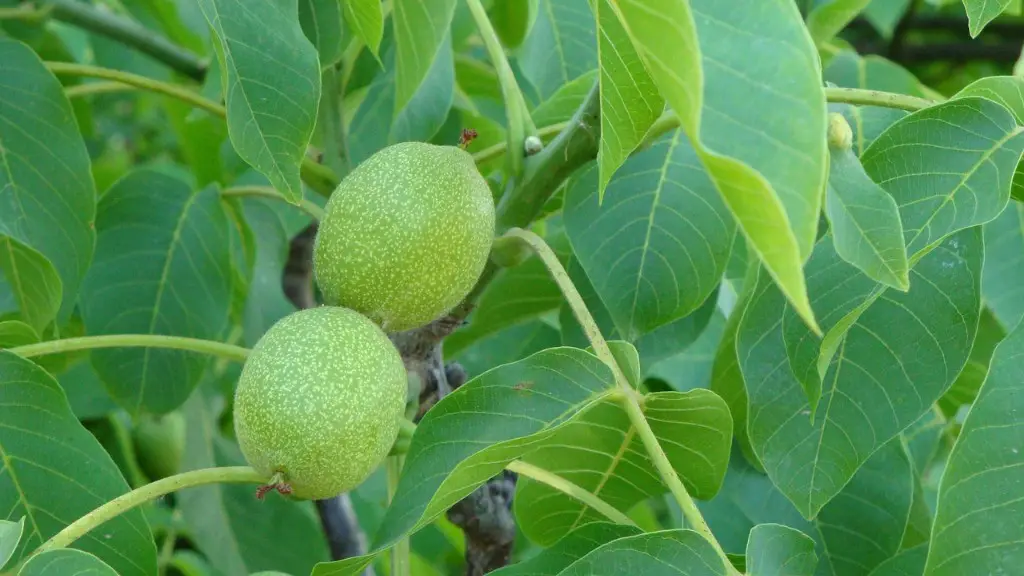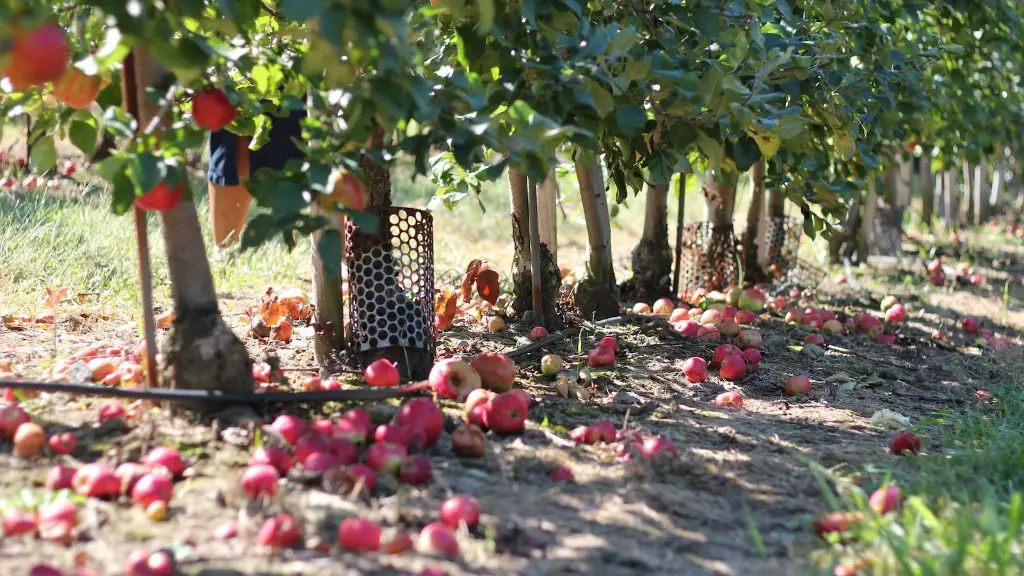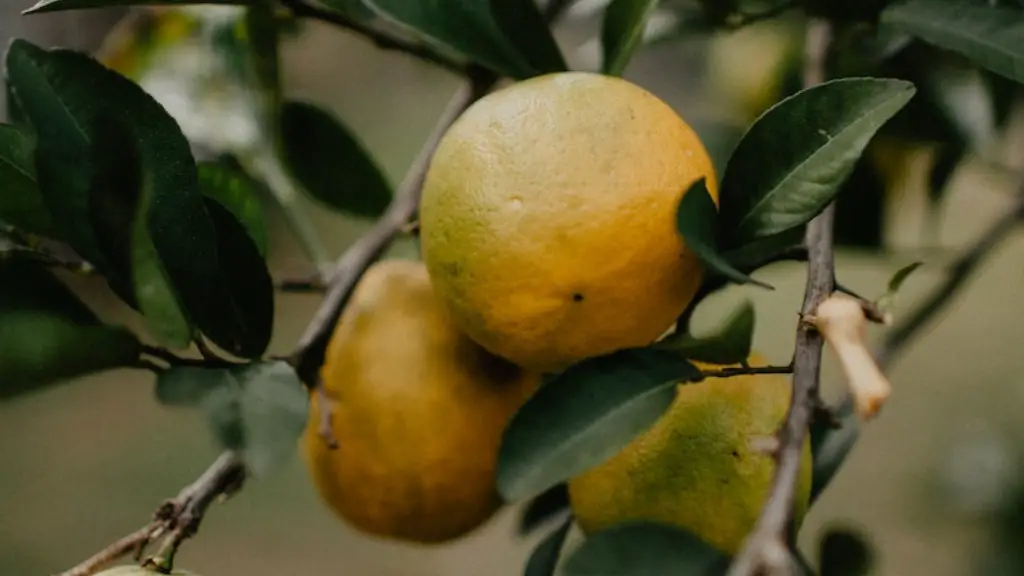Every gardener knows there’s nothing quite like biting into a freshly picked avocado from your own tree! Unfortunately, avocado trees don’t always look or feel their best and can cause some worry for inexperienced gardeners. One of the biggest causes of concern for new tree owners is when the tree begins to droop. The good news is that drooping is a common symptom of an avocado tree and understanding the underlying cause can help you take steps to treat the tree effectively.
The roots of an avocado tree rely on water for growth. If the soil does not provide enough water for the roots, the tree will become dehydrated and start to droop. This is the most common cause of drooping in avocado trees and thankfully the solution is relatively straightforward. The tree can be given a thorough watering until the soil is saturated and the drooping should stop.
Soil in containers can be particularly susceptible to drying out quickly, so if your tree is in a pot then it may be worth checking the soil moisture on a regular basis. If the soil feels dry, it’s time to give the tree a good drink!
Another cause of drooping in avocado trees is when the tree is unable to absorb enough nutrients from the soil. This can be due to the soil being heavily compacted, or if there are deficiencies in the soil’s nutrient balance. Applying a slow-release fertilizer according to the instructions should help in this case.
Finally, avocado trees can also suffer from fungal diseases that cause the leaves to droop. If you think this might be the cause, it’s best to take the tree to an experienced horticulturist for further advice.
Identifying an Avocado Tree Health Issue
To accurately identify the cause of drooping in an avocado tree, it’s important to look for other symptoms around the plant such as discolored leaves, unusual leaf shapes, wilting or yellowing foliage. If any of these are present, then there could be a more serious issue requiring expert diagnosis.
Fungal diseases are typical culprits here and are the most difficult to remedy without specialist help. Common signs of fungal disease include yellowing or discoloration of the leaves, spots on the leaves or stems, and mold on the surface of the soil. It’s crucial to act quickly if you spot any of these signs, to give the tree the best chance of recovery.
Before presenting the problem to a horticulturist, it’s also worth making sure your tree has the right environment in which to flourish. If a tree is in too little direct sunlight or too much, that can cause drooping of the leaves.
Temperature can also be important, as avocado trees can only survive in certain temperature ranges. If the temperature is too extreme, this can cause drooping of the leaves which could be the tree’s way of saying it’s too hot or too cold.
Protecting your Avocado Tree from Drooping
Once you have dealt with the immediate issue of drooping leaves, it’s worth taking a few steps to ensure your tree is kept in the best environment for long-term health and vitality. As mentioned, avocado trees need a specific temperature range to perform their best so it’s important to keep an eye on the weather in your area.
Similarly, the tree should be in a warm, sunny place with plenty of air circulation. This will help to prevent fungal diseases that cause drooping leaves, as well as helping the tree to absorb water and nutrients effectively.
To keep the soil in good condition, regular mulching can help to keep the moisture levels and nutrients high at all times. This also helps to keep the roots of the tree cool, which allows them to grow more quickly and effectively.
Finally, regular pruning and trimming of the tree can help to improve the overall health and vital of the tree. Trimming the dead or diseased branches on the tree will reduce the risk of fungal diseases, and ensure that the tree is able to absorb enough light and water.
Using Fertilizers To Prevent Avocado Tree Drooping
Applying fertilizers specially designed for avocado trees can also help to prevent drooping of the leaves. As avocado trees need a specific nutrient balance for healthy growth, using a balanced fertilizer will ensure that the tree has all the necessary vitamins and minerals. Standard store-bought fertilizers can also be used, but should be diluted according to the instructions on the packaging or your local horticulturist.
Organic fertilizers like compost and manure are also particularly useful. These are a great source of natural nutrients and minerals and can help to nourish an avocado tree in a more natural way. The added benefit is that these fertilizers can also help to improve soil structure and aeration.
Whichever type of fertilizer you use, it’s best to wait until the soil is moist and not too dry before applying. This will give the avocado tree the best chance of absorbing the nutrients and responding positively.
Stability and Proper Care – The Key to Keeping your Avocado Tree Healthy
Avocado trees can vary greatly in their needs, depending on where and how they are grown. As such, it’s important to tailor your methods of care to the environmental needs of your own tree, as well as following the advice of an experienced horticulturist. Keeping these needs in balance will help your tree to thrive and be less susceptible to disease, the effects of extremes temperatures, or the lack of nutrients that can cause drooping.
That being said, it is not uncommon for avocado trees to begin to droop at some point in their life. As long as you are aware of the associated symptoms and have a clear plan of action in mind, you should be able to provide the necessary care to your tree quickly and effectively to prevent any major damage.
Maintaining the Right Moisture Balance for an Avocado Tree
Sometimes, an avocado tree can suffer from an excess of water, leading to drooping leaves. This is particularly common if the soil is waterlogged and there isn’t enough airflow getting to the roots of the tree. In this case, it’s important to let the soil partially dry out before giving the tree a thorough watering. This can be done by either leaving the tree to its own devices or by loosening the soil around the root ball with a garden fork.
It’s also worth considering any nearby sources of water, such as sprinkler systems, which might be encouraging the tree to take in too much water. If necessary, you should adjust the irrigation system as required to ensure the tree is getting the right amount of water.
It can also be beneficial to use a layer of mulch around the base of this tree. Mulch helps to retain the moisture in the soil which can help to keep the roots of the tree cool and reduce the risk of over-watering.
Dealing with Parasites on an Avocado Tree
Parasites such as scale insects can also be a cause of drooping in avocado trees. These pest insects feed on the sap from the leaves and stems of the tree, leaving it weakened and susceptible to drooping. If you see any signs of infestation, it’s important to act quickly to remove the insects and apply a suitable pesticide.
It’s also worth considering an organic solution to insect parasites, such as neem oil, which won’t harm the environment or other beneficial insects. Alternatively, setting up barriers around the tree can help to repel the pests, reduce their numbers and stop the tree from suffering.
The best way to keep pests at bay is to keep an eye on the tree and remove any parasites as soon as you spot them. Keeping the tree healthy and strong with balanced fertilization and good soil structure also helps to limit the effects of any pests.
Keeping an Avocado Tree in the Best Possible Condition
Caring for an avocado tree is all about balance – making sure the tree is not too cold or too hot, has enough water, the right type of soil, and the right nutrients all play their part in keeping an avocado tree in the best possible condition. Regular pruning and trimming also help to reduce the risk of pests and fungal diseases, while also allowing the tree to absorb enough light and water.
Using quality-controlled fertilizers and mulches can also play an important role in keeping the soil in the best condition for optimal growth, as can planting companion plants in the vicinity which can help the tree to receive the necessary nutrients.
By following the simple steps outlined above, you should be able to keep your avocado tree in good health for many years to come!




